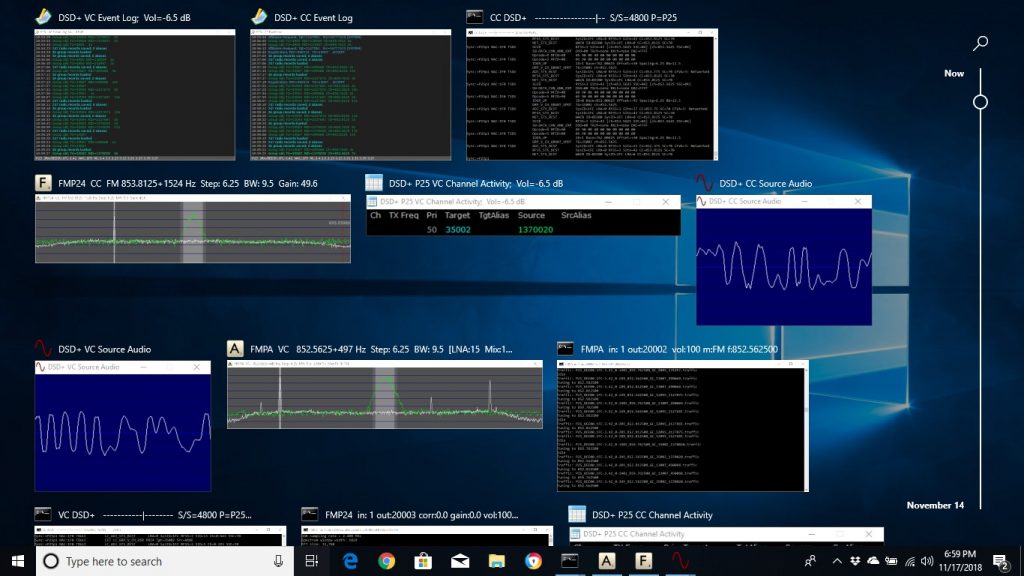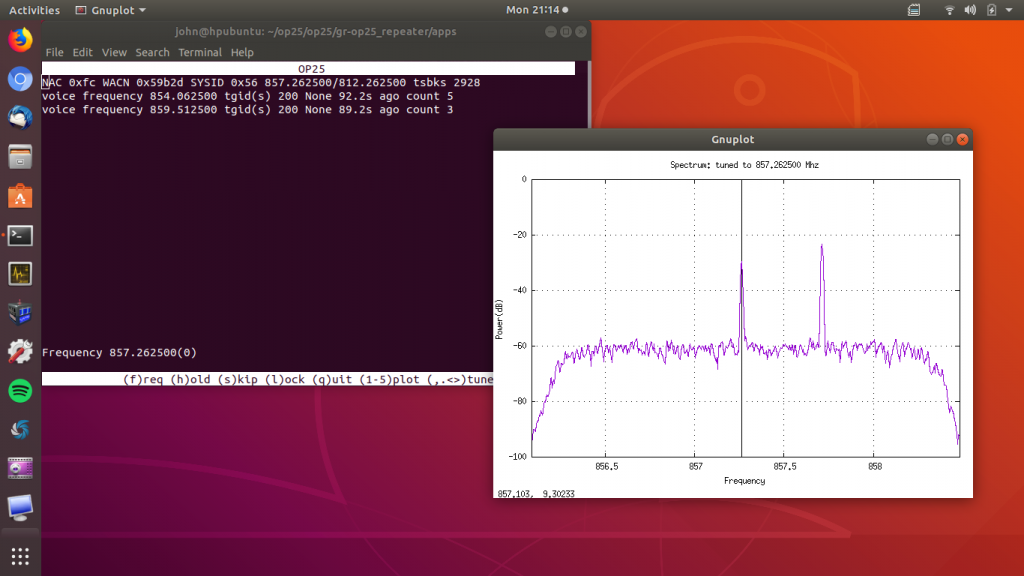It was the best of decoders, it was the worst of decoders……… As you can tell I’m quite the literate bastard and highly up to speed on my Dickens.
I love digital signal decoding as it is almost something that you seemingly aren’t supposed to do, hence the attraction of it all. There are several hunks of software that can decode digital signals and each one has it’s strength and weaknesses. The ones I have dabbled around with are:
There are certainly others, not to mention maybe the most powerful one (but by far the one that requires the most geek foo) is GNURadio.
So as the title of this blog implies this is kind of a MINI shootout between DSDPlus and OP25. It literally took me multiple sessions over the course of a year to get OP25 going and then one day the light bulb just went on. It took me 4 days of almost continuous hacking to get DSDPlus working correctly. So let me outline the both of them a bit.
And let me state for the record, how you’d pick or choose one would depend on what OS you use, or what systems you were trying to decode. I live in New Bern NC and there are only a few systems and only two that I care to track. Both are P25 Phase 1 systems.
DSDPlus
- Windows program – I can make it work in Linux or on Mac with Wine but it will not do the Trunked Radio thing, or that is to say I haven’t cracked that nut yet. That being said DSDPlus itself works fine for decoding single digital signals.
- You have to configure 4 batch files, and one to two config files (depending on your hardware you are using).
- Requires TWO RTL-SDR devices.
- Does not work that great with P25 Phase 1 LSM systems.
- Seems to only track one system at a time (per hardware device).
- Works with RTL-SDR generic dongles and Airspy devices only.
OP25
- Linux program – to make it work on Windows I believe you’d have to run a virtual machine with a Linux OS.
- Hard to set up initially.
- Requires only ONE RTL-SDR device
- Works GREAT with P25 Phase 1 LSM systems.
- Can track multiple systems at a time with only one RTL-SDR device.
- Works with almost all RTL-SDR devices.
- Runs on inexpensive, low power hardware such as a Raspberry Pi.
Lets talk about user interface now. DSD is PRETTY with all manner of open windows and lots of pretty stuff to look at. Lots of activity. Very geeky. This will amaze and confuse your friends.

OP25 – Not so much.

So in my opinion OP25 is by far the best decoder and it uses WAY LESS hardware then DSDPlus. With OP25 I can track two trunked systems in New Bern NC with one generic RTL-SDR radio that costs about $25 to $30 (NooElec Nano 3).
With DSDPlus it would double that cost to just track 1 system and triple the cost to track 2 systems. Having said that I own about 10 or 15 RTL-SDR devices, no it’s not really that big of a deal for me.
Also I am by and large a Linux and Mac guy. I do own a Windows Laptop but that is mostly because I dabble in a lot of RTL, and Ham Radio stuff and some things are just Windows only. That’s just the way it is.
So anyway, just because you CAN do something doesn’t mean you SHOULD do something and that’s kind of how I feel about DSDPlus FOR FOLLOWING Trunked Radio systems. Other then that it is bad assed for following DMR, NXDN, and just digital signals in general.
My nod for decoder goes to OP25 all day, every day, and twice on Sunday.

are you available for contract work integrating OP25 into a system?
I’m not commenting about DSDPlus to dis OP25. In fact, I’m in the middle of getting OP25 and and an Airspy set up on an RPI4.
Just wanted to mention that some things have changed regarding DSDPlus since your original post. DSDPlus works flawlessly on CQPSK / LSM systems when using FMP24 + DSDPlus tcp-linked. And for the last handful of versions (as of 1-8-2020) DSDPlus has been able to trunk any DMR / NXDN / IDAS / P25 trunked system using a single RTL device / Airspy. There is no longer a requirement of two separate receiving devices in order to trunktrack with DSDPlus.
What actually got me hear was a link with your tutorial on getting OP25 installed and running. I’ve got everything installed and just need to delve through various docs and forum posts in order to remember how to use an Airspy with OP25. Last time I did it was 2-3 years ago, and I don’t remember everything.
At any rate, thanks for the nice tutorial.
Mike